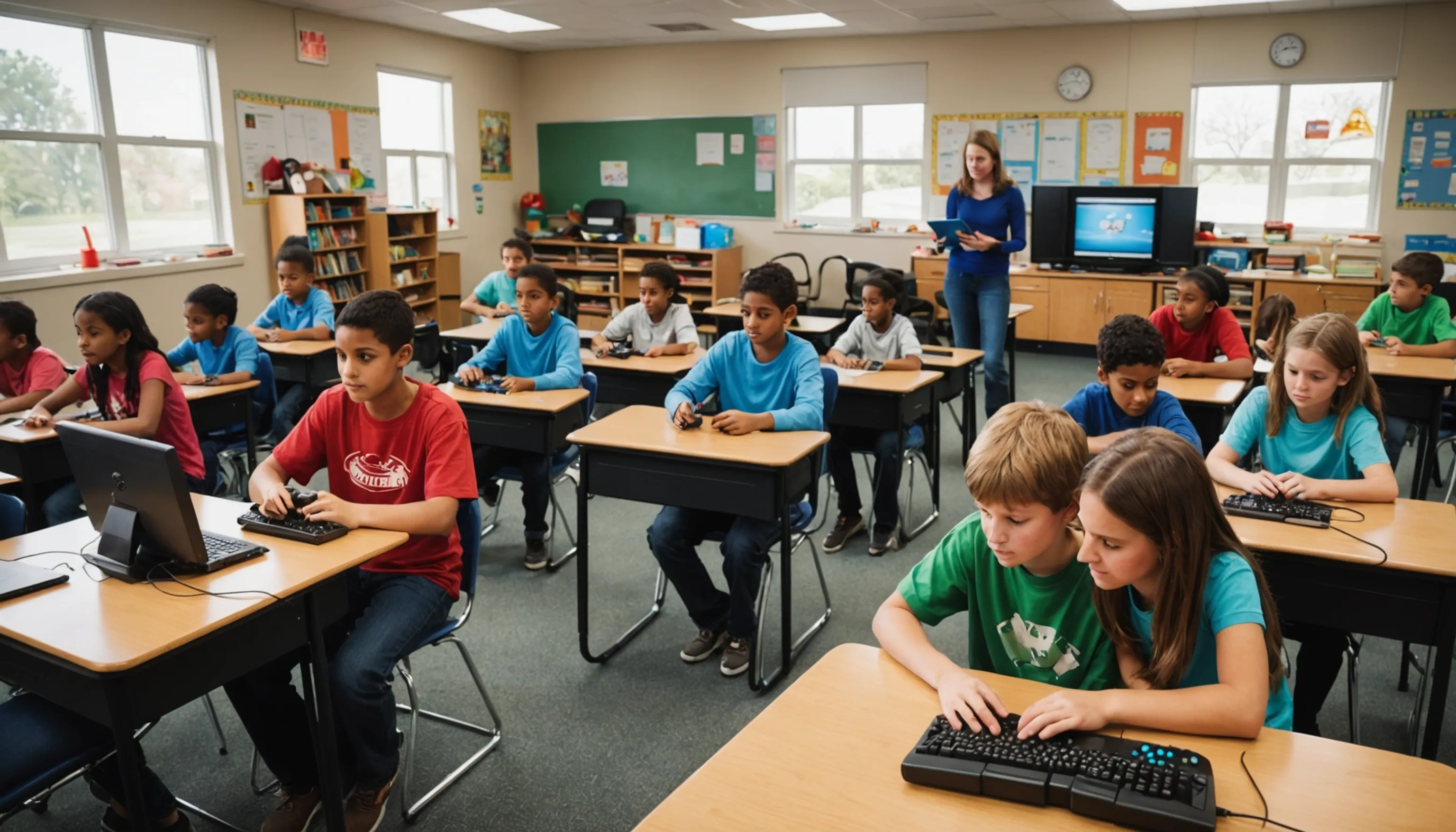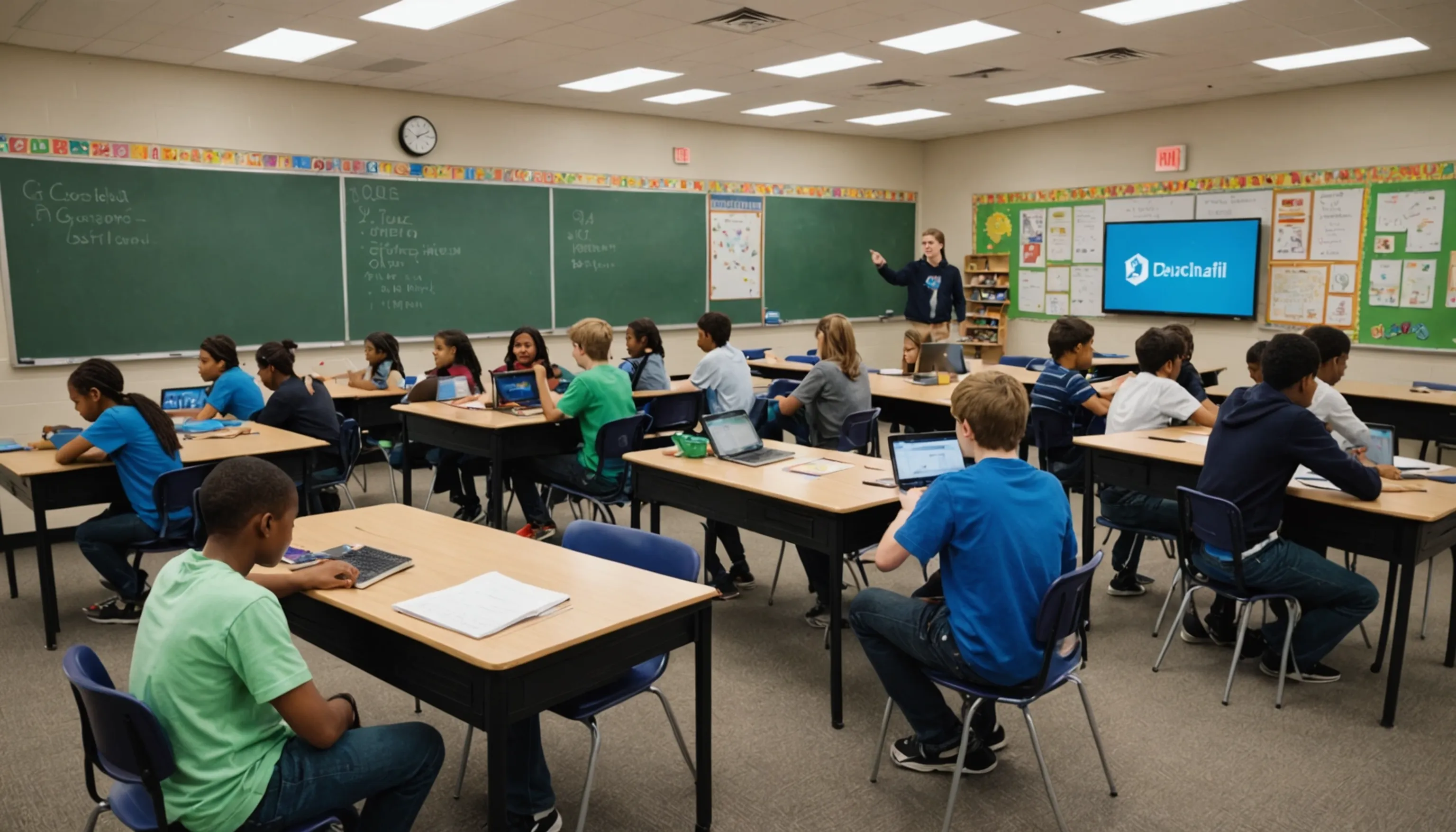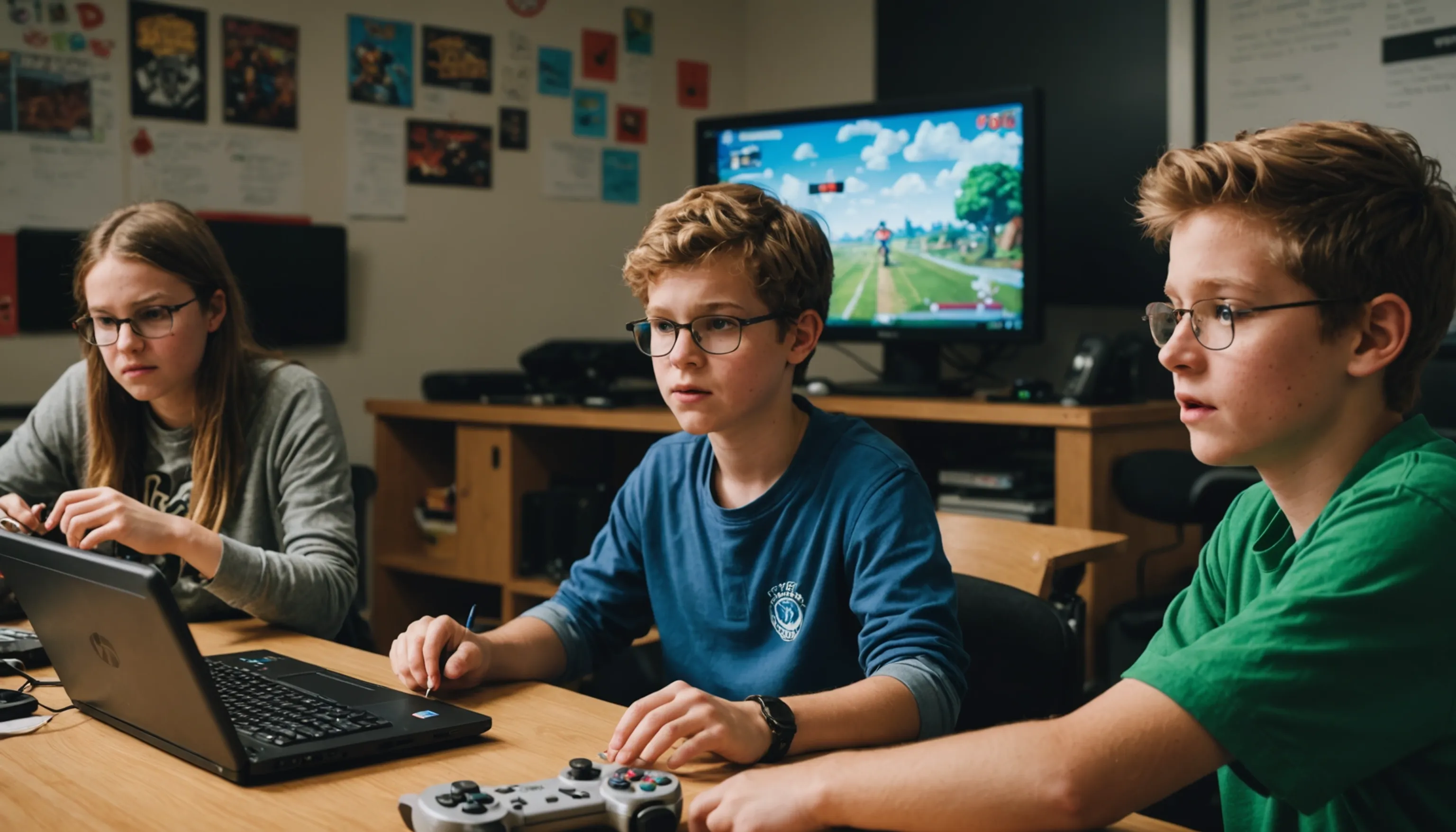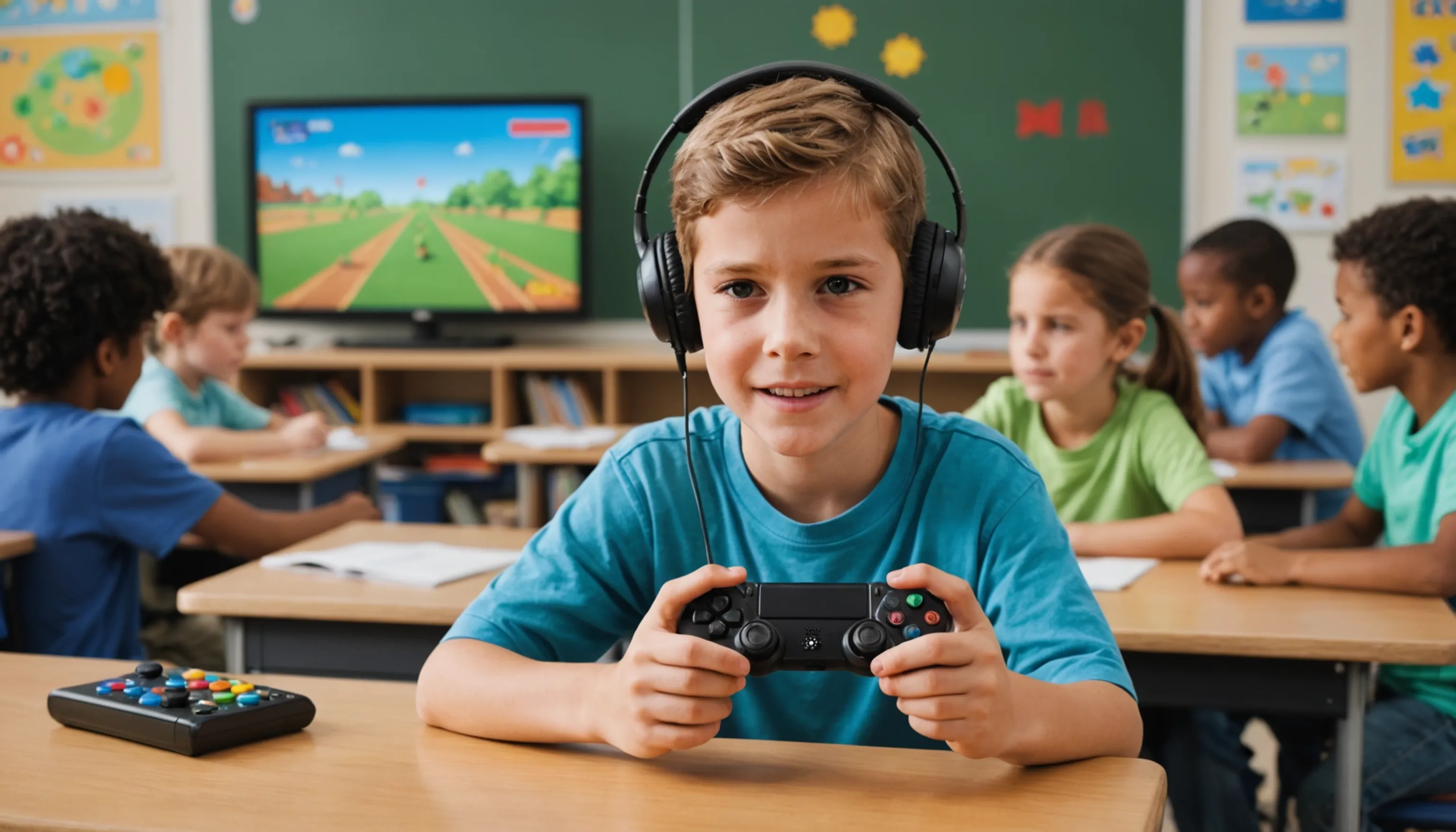Five Ways to Use Video Games in the Classroom
 HvWHenry van Wagenberg
HvWHenry van Wagenberg
Five Ways to Use Video Games in the Classroom
Video games can be a powerful tool in the classroom, enhancing learning experiences for students. Here are five ways to effectively use video games:
- Enhancing Engagement with Gamified Learning: Incorporate game elements into lessons to boost student motivation.
- Fostering Teamwork and Collaboration: Use multiplayer games to promote teamwork and communication among students.
- Developing Critical Thinking Skills: Challenge students with strategy games that require problem-solving.
- Incorporating Storytelling and Creativity: Encourage creative writing and storytelling through role-playing games.
- Utilizing Educational Games for Skill Building: Leverage games designed for specific subjects to reinforce learning.
Enhancing Engagement with Gamified Learning
Gamified learning is an innovative approach that incorporates game mechanics into educational settings to enhance student engagement. By introducing elements like points, levels, and rewards, teachers can motivate students to participate actively in their learning journey. This method transforms traditional lessons into interactive experiences, making learning more enjoyable and effective.
One effective way to implement gamified learning is through the use of online platforms that allow teachers to create quizzes and challenges. For example, platforms like Kahoot! and Quizizz enable educators to design competitive quizzes that students can play in real-time, fostering a sense of excitement and urgency.
Additionally, incorporating game-like scenarios into lessons can help students see the relevance of their studies. For instance, using role-playing games where students must solve problems or complete tasks related to their curriculum can deepen their understanding and retention of the subject matter.
Moreover, gamified learning encourages a growth mindset. When students earn rewards or progress through levels, they develop resilience and a willingness to tackle challenges. This shift in perspective can lead to improved academic performance and a more positive attitude towards learning.
Ultimately, enhancing engagement through gamified learning not only makes lessons more captivating but also cultivates critical skills such as collaboration, creativity, and critical thinking. By integrating video games and gamification into the classroom, educators can create an environment where students thrive and are excited to learn.

Fostering Teamwork and Collaboration
Fostering teamwork and collaboration in the classroom is essential for developing social skills and preparing students for real-world interactions. Video games provide an excellent medium to promote these skills, as many are designed to require players to work together to achieve common goals. By integrating cooperative games into lessons, educators can create opportunities for students to collaborate and build strong interpersonal relationships.
For example, multiplayer online games like Minecraft or Fortnite can be used to encourage students to design projects collaboratively. In Minecraft, students can work in teams to create structures, which requires communication, planning, and coordination. These activities help students learn to listen to each other's ideas, negotiate roles, and support one another in reaching shared objectives.
Additionally, game-based learning platforms such as Escape Rooms or team challenges not only engage students but also require them to rely on each other’s strengths. As they solve puzzles or complete tasks, students develop problem-solving and conflict-resolution skills that are vital in both academic and personal contexts.
Moreover, these gaming experiences promote inclusivity. Students who may struggle in traditional classroom settings often find their voice in collaborative gaming scenarios, where they can contribute in unique ways. As they work together, they learn to appreciate diverse perspectives and talents, fostering a sense of community within the classroom.
Ultimately, fostering teamwork and collaboration through video games creates a dynamic learning environment that prepares students to be effective collaborators in their future endeavors.
Developing Critical Thinking Skills
Developing critical thinking skills is a crucial aspect of education, and video games offer an engaging platform to cultivate these abilities. Many games are designed to challenge players with complex problems that require analysis, evaluation, and strategic planning. By incorporating these games into the classroom, educators can create a stimulating environment that promotes critical thinking.
For instance, puzzle-based games like Portal or The Legend of Zelda require students to think critically and creatively to progress through levels. Players must assess their surroundings, identify obstacles, and devise strategies to overcome challenges. This process mirrors real-life problem-solving scenarios, encouraging students to think outside the box and consider multiple solutions.
Moreover, strategy games such as Civilization or StarCraft demand a high level of critical analysis. Students must evaluate resources, make decisions based on potential outcomes, and adapt their strategies as the game progresses. This not only enhances their analytical skills but also teaches them the importance of foresight and adaptability in decision-making.
Incorporating games that involve narrative elements can also enhance critical thinking. Role-playing games (RPGs) like Dungeons & Dragons encourage students to engage in deep storytelling, requiring them to think critically about character motivations, consequences of actions, and moral dilemmas. This fosters empathy and ethical reasoning, essential components of critical thinking.
Ultimately, utilizing video games to develop critical thinking skills equips students with the tools they need to navigate complex challenges in both their academic and personal lives.

Incorporating Storytelling and Creativity
Incorporating storytelling and creativity into the classroom through video games can significantly enhance students' engagement and imaginative capabilities. Video games often feature rich narratives and immersive worlds that inspire students to think creatively and express their ideas in unique ways. By leveraging these elements, educators can create a dynamic learning environment that fosters creativity and storytelling skills.
For instance, role-playing games (RPGs) like Final Fantasy or The Witcher allow players to step into the shoes of various characters, experiencing intricate plots and moral choices. This narrative-driven approach encourages students to analyze character development and plot progression, enabling them to understand the importance of storytelling elements. Educators can use these games as a springboard for creative writing assignments, asking students to create their own narratives inspired by the game’s universe.
Additionally, games like Minecraft provide a sandbox environment where students can build their own worlds and design narratives around them. This open-ended creativity allows students to express themselves artistically while honing their problem-solving skills. Teachers can assign projects where students create games or stories based on specific themes or historical events, merging technology with creative expression.
Moreover, incorporating storytelling in educational settings helps students develop communication skills. As they share their creations with peers, they learn to articulate their ideas clearly and persuasively. This combination of creativity and storytelling not only enriches the learning experience but also prepares students for various forms of expression in their future endeavors.
Utilizing Educational Games for Skill Building
Utilizing educational games in the classroom is an effective way to build essential skills in students. These games are designed to target specific learning objectives, helping students develop competencies in areas such as math, language arts, and science. For example, math-based games like Prodigy or Kahoot! engage students in interactive problem-solving, reinforcing their understanding of mathematical concepts.
Additionally, language learning apps like Duolingo gamify vocabulary and grammar practice, making the process enjoyable and effective. By incorporating these educational games, teachers can create a fun learning environment that encourages skill mastery while keeping students motivated and engaged.
Subjects That Benefit from Educational Video Games
Educational video games can significantly enhance learning across various subjects, making complex concepts more accessible and engaging for students. Here are some subjects that particularly benefit from the incorporation of video games into the curriculum:
- Mathematics:Games like Prodigy and Math Blaster help students practice arithmetic, algebra, and geometry through interactive challenges. These games provide instant feedback, allowing students to learn from mistakes in real-time.
- Science: Titles such as Kerbal Space Program allow students to explore physics and engineering concepts by designing and launching rockets. This hands-on approach fosters a deeper understanding of scientific principles through experimentation.
- History: Games like Assassin's Creed: Discovery and Civilization provide immersive historical experiences, allowing students to explore different time periods and cultures. This engagement encourages students to think critically about historical events and their impacts.
- Language Arts: Interactive storytelling games, such as To the Moon, can enhance reading comprehension and narrative analysis. Students can analyze character development and themes while experiencing rich narratives.
- Foreign Languages: Language-learning games like Duolingo gamify vocabulary and grammar practice, making language acquisition more enjoyable and effective.
By integrating educational video games into these subjects, educators can cater to diverse learning styles, enhance student engagement, and provide a dynamic learning experience that traditional methods may lack. This approach not only fosters a love of learning but also equips students with essential skills for their future.
Assessing Students Through Game-Based Learning
Assessing students through game-based learning is an innovative approach that leverages the engaging nature of video games to evaluate student understanding and skills. This method allows educators to gather valuable insights into student performance in a dynamic and interactive way.
One effective strategy is to use educational games that include built-in assessment tools. For instance, platforms like Kahoot! and Quizizz provide instant feedback and analytics on student responses during quizzes and challenges. This real-time data helps teachers identify areas where students may be struggling and tailor their instruction accordingly.
Additionally, game-based assessments often require students to apply their knowledge in practical scenarios. For example, simulations in games like SimCity require students to manage resources and make decisions based on real-world principles, allowing educators to assess critical thinking and problem-solving skills in an authentic context.
Moreover, the competitive nature of games can motivate students to perform better. When students are engaged in a game, they are more likely to take risks, experiment, and learn from their mistakes without the fear of traditional assessment consequences. This environment fosters a growth mindset, where students view challenges as opportunities for improvement.
Finally, incorporating game-based assessments can promote collaboration among students. Team-based games encourage peer interaction, allowing educators to observe teamwork and communication skills in action. Overall, game-based learning provides a comprehensive and enjoyable way to assess student understanding, paving the way for more effective instructional strategies.
